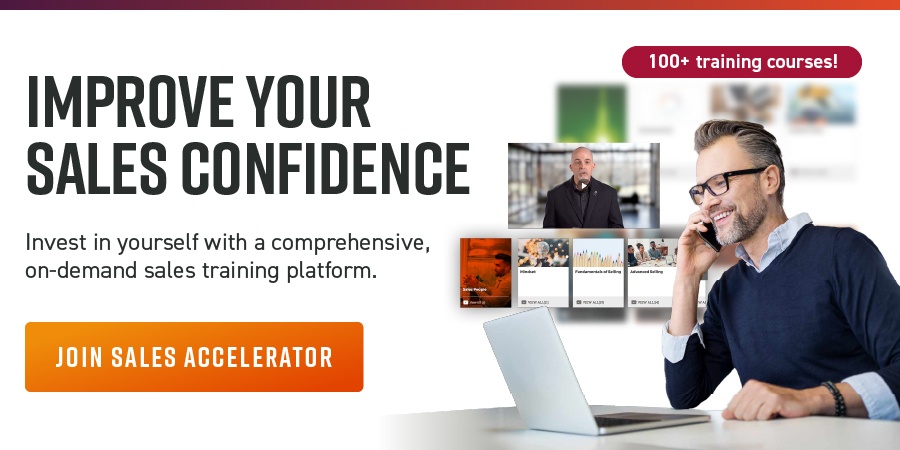There are people who still believe that the sales contest is between two companies and their solutions. The truth is that the contest is between the salespeople vying for the opportunity.
Because this is true, the variables include the performance of the salesperson and the value of their sales conversation. To make this easy, we will assume there are two salespeople pursuing the client. The difference between winning and losing comes down to which one the client believes is the best party to ensure they succeed in achieving the better results they need.
Cold Calling: Crafting the First Impression in Sales
Salesperson 1 makes a call to schedule a first meeting, saying, “This is Jimmy Jones with Acme Company. We are working with a couple of your competitors, and we have helped them produce a 25 percent increase over the last two months. We’d love to help you, too."
Salesperson 2 calls the same prospect and uses a different strategy, saying, “This is Susan Song with Genco Company. I am calling you today to ask for a 25-minute meeting to share our Q2 executive briefing and the four trends that are causing headwinds. Even if there is no next step, I’ll leave you with the briefing so you can share it with your team. What does your Thursday look like?”
Salesperson 1’s approach is aggressive and designed to cause the FOMO so the contact takes a meeting. Let’s assume the client took the bait and agreed to learn what this company is doing to help their competitors.
Salesperson 2’s approach offers something of value for the contact’s time without resorting to what amounts to a threat. This salesperson also secures a meeting on the contact’s calendar.
The First Meeting: Establishing Value and Building Trust
Jimmy Jones shows up to the first meeting feeling confident. He starts by naming a couple of the company’s competitors and suggesting they have an advantage over the prospective client. Jimmy continues by explaining how his company’s solution is helping others in the client’s industry and how it can help them. Jimmy didn’t take notice of the client’s response, as he was too focused on his solution. The contact has an interest in better results, but they don’t love Jimmy.
Susan Song thanks the contact for their time and begins by asking, “Would it be okay for me to share our briefing on the four trends? I am certain you are tracking the same trends, and I would love to get your perspective on them and what is showing up in your world.” The contact shares they are already having trouble with a critical outcome they have been struggling with for months.
Jimmy believes his solution will help the client produce the better results his company is already providing their competitors. Even though he is correct that the solution could help, the lack of a client-centric approach and real conversation about change means the contact has a hard time considering Jimmy as someone they would want to buy from.
Susan believes she needs to be credible, someone who has done her homework and prepared for this conversation. She also created value by providing insights. Because Susan already knew the problem the client is experiencing, she stands out as someone with expertise and experience. The contact notices that Susan knows their problem better than they do.
At this point, the contact is starting to lean toward Susan, but is considering both salespeople, even though they are skeptical about Jimmy.
Discovery: Understanding Client Needs through Effective Communication
Jimmy asks a lot of questions. He starts with an astute question about the contact’s metrics, surprising the contact who wasn’t prepared for a question like that from Jimmy. But in the next minute, Jimmy starts asking about the contact’s budget and their decision-making process, questions that are so self-oriented that the contact must conceal their laughter. Jimmy is all about Jimmy.
Susan has a lot of questions. She starts by asking about who needs to be included in this conversation, explaining that when people who have a stake are left out, it can make it difficult to land on the right solution and may cause them to feel they weren’t part of the change. The contact asks if he can bring in two stakeholders and if Susan can come back to have a conversation with a few people who are missing. Susan asks about the trends that are making things difficult, followed by asking about their metrics. Then, she asks what they will need to do to help their team with this change. Most of the time, the contact is asking the questions, as they are doing their own discovery.
The Decision: Navigating Toward a Successful Sales Outcome
By this time, the contest is over. The contact prefers Susan, knowing her solution is equal or better than Jimmy’s, and offers the upside of not having to spend more time with Jimmy.
Jimmy isn’t the worst salesperson in the world, but his approach is outdated, and it is clear he works for a company that believes selling is something you do to someone, not something you do with someone and for someone. Jimmy is trying to win, but he isn’t all that interested in the client winning, which is why most of his questions were about the contact’s buying process.
Susan, on the other hand, was more interested in leading the client and ensuring they are learning what they need to know so they can make their decision. To do so, they must be certain they will produce the better outcomes that caused them to start their change initiative.
Conclusion: Prioritizing the Client's Success in Sales Strategies
What you should take away from this story is that how you sell is more important than what you sell. You should also realize that your company and your solutions are at parity. The salespeople competing for the business are where the deciding factors emerge.









.jpg?width=768&height=994&name=salescall-planner-ebook-v3-1-cover%20(1).jpg)


